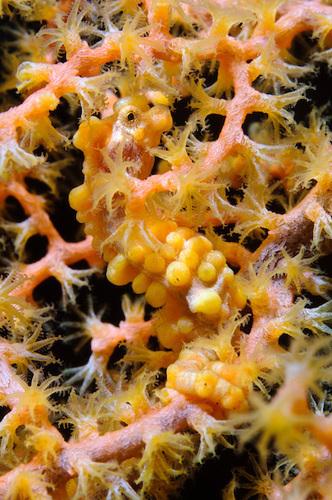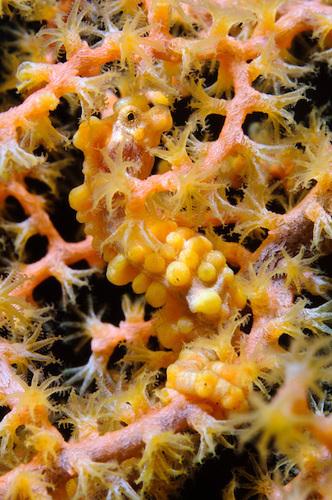Bargibanti pygmy seahorses, Hippocampus bargibanti, are typically grey with red tubercles, but orange variations are commonly found at Seraya in Bali.
Rarely reaching more than one inch in size, these tiny fish form close relationships with Muricella gorgonians, using their remarkable camouflage to disguise themselves from predators.
The seahorse’s tubercles and truncated snout match the color and shape of the polyps of the host gorgonian, while its body resembles the stem.
The gray variation with red tubercles lives on M. plectana, and the yellow variation with orange tubercles on M. paraplectana.
The majority of pygmy seahorse species have only been discovered during the last 10 years, and many more are believed to be as yet undescribed.
Unlike other seahorse species, a male pygmy seahorse’s brood pouch is located in the trunk region with a downward-facing opening. Here the female lays a small number of eggs, which the male fertilizes and incubates until birth.
Matthew Oldfield is a freelance photographer based in Bali, Indonesia, specializing in editorial and documentary images from both above and below the waves. He works primarily with charities, NGO’s, and other organizations working to conserve the environment, endangered species, and disappearing cultures.
Matthew is on Twitter @matthewoldfield. More of his photos can be found at matthew-oldfield-photography.com
The Epoch Times publishes in 35 countries and in 19 languages. Subscribe to our e-newsletter.







